 Q: I have recently been to Ecuador and I acquired this mask. It is a Payaso mask from a carver friend in a village of Cotopaxi province. It is a copy of a very old mask in another village at the feet of one of the volcanoes there. The villagers asked the carver to make a copy, so he did – he made actually two of them, one also for me, luckily. Honestly, it is one of the best recently made and to-be-worn masks I have ever come across; hard pine wood. And it is the only Payaso with a beard and a heart on the forehead – most other Payasos feature a cross on the forehead, which relates to Christianity. I was told that the heart symbolizes “the great love the Payaso has for his community fellows” (the Payaso jokes around at festivities – in the other photo you can see an albeit very patriotic version that I came across). The masking tradition in Cotopaxi is quite alive still, however, at the yearly procession for carnival, I have not anymore spotted many of the great wooden masks. The tradition of wearing wooden masks seems to get lost, slowly.
Q: I have recently been to Ecuador and I acquired this mask. It is a Payaso mask from a carver friend in a village of Cotopaxi province. It is a copy of a very old mask in another village at the feet of one of the volcanoes there. The villagers asked the carver to make a copy, so he did – he made actually two of them, one also for me, luckily. Honestly, it is one of the best recently made and to-be-worn masks I have ever come across; hard pine wood. And it is the only Payaso with a beard and a heart on the forehead – most other Payasos feature a cross on the forehead, which relates to Christianity. I was told that the heart symbolizes “the great love the Payaso has for his community fellows” (the Payaso jokes around at festivities – in the other photo you can see an albeit very patriotic version that I came across). The masking tradition in Cotopaxi is quite alive still, however, at the yearly procession for carnival, I have not anymore spotted many of the great wooden masks. The tradition of wearing wooden masks seems to get lost, slowly.
A: I’m so pleased that you sent us these photos. They prove that masquerade is alive and well in many parts of the world. I hope our readers will appreciate how well a mask can be made to feel comfortable to the dancer. A

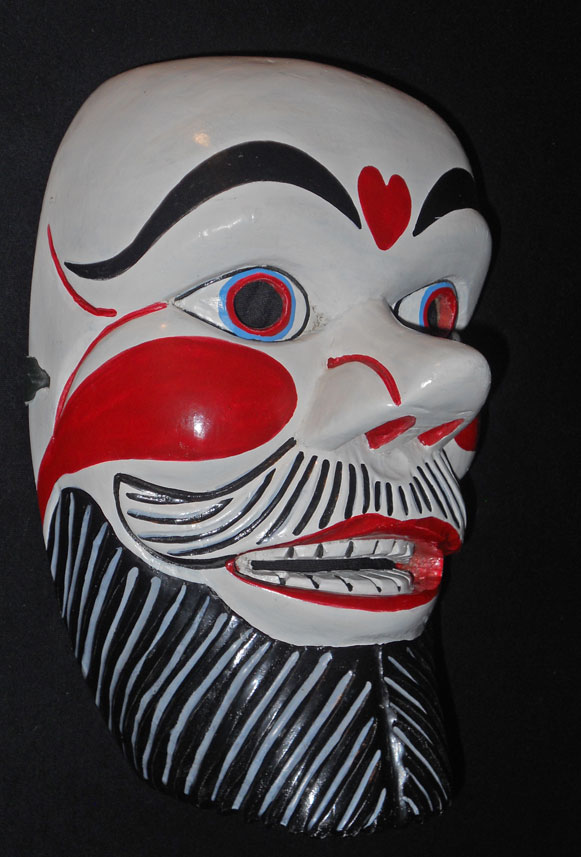
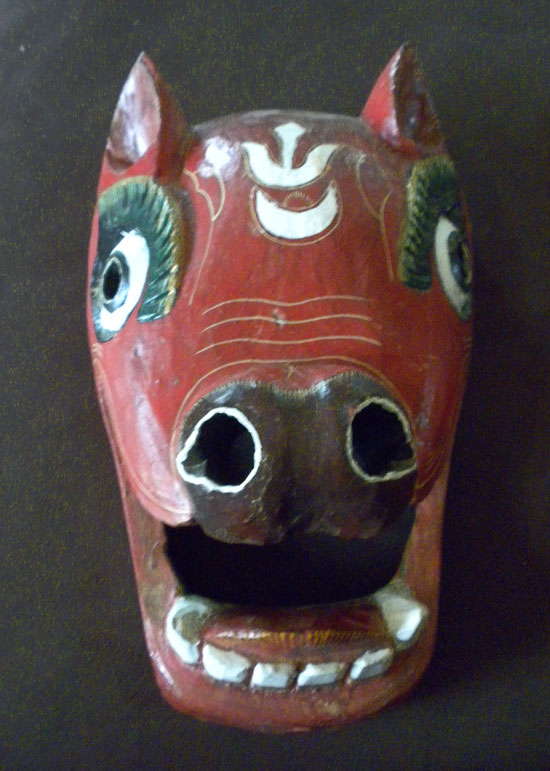
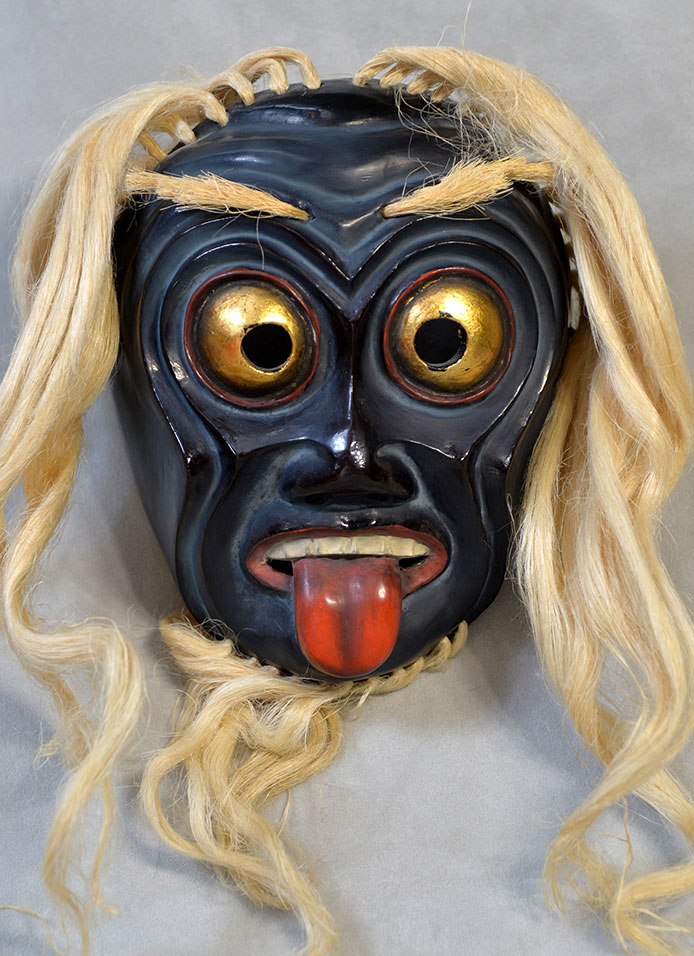
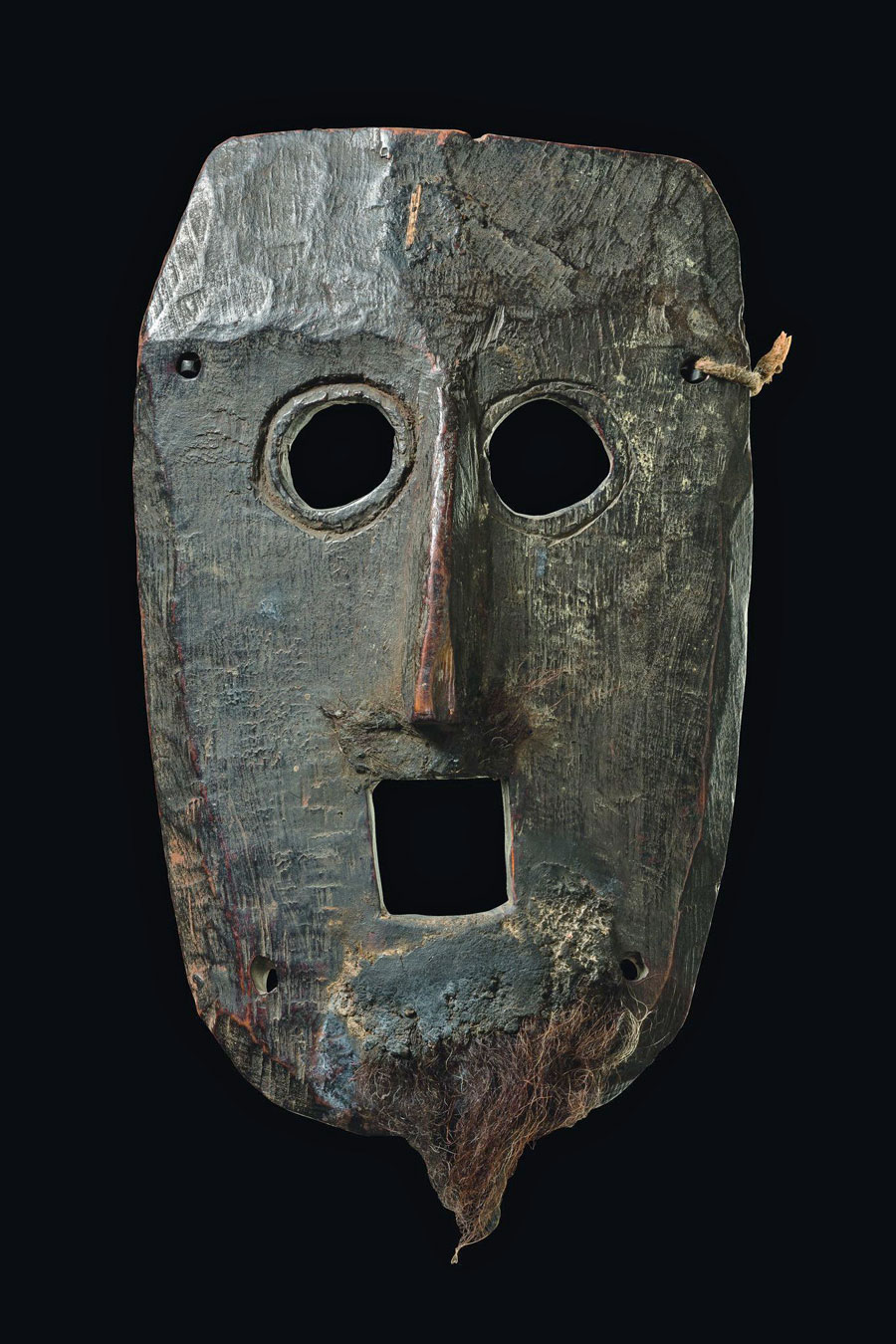
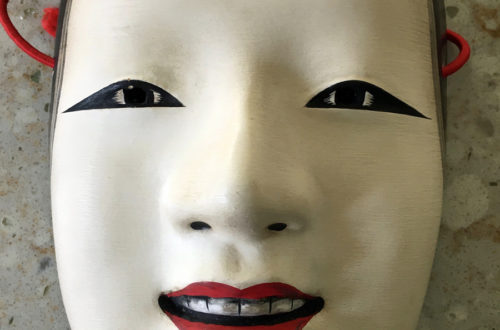
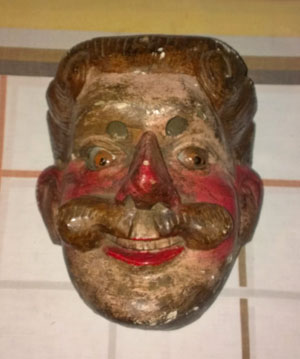
2 Comments
Maximus
What is the meaning of this mask? I need to know for a school project.
Bob Ibold
I recommend that you spend some time on Google. Because I deal with so many types of masks, I rarely know much about the ethnography of specific cultures. Good luck with your search!